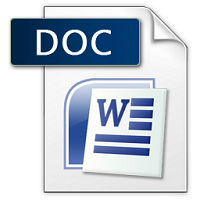₹198.00
Scroll down for Match your questions with Sample
Note- Students need to make Changes before uploading for Avoid similarity issue in turnitin.
Another Option
UNIQUE ASSIGNMENT
0-20% Similarity in turnitin
Price is 700 per assignment
Unique assignment buy via WhatsApp 8755555879
Description
| SESSION | AUG-SEP 2023 |
| PROGRAM | MASTER OF BUSINESS ADMINISTRATION (MBA) |
| SEMESTER | III |
| COURSE CODE & NAME | DFIN304 – INTERNAL AUDIT AND CONTROL |
Assignment Set – 1
- Explain in detail the various qualities required in an Internal Auditor.
Ans 1.
Internal auditing is a critical function within any organization, ensuring compliance, financial integrity, and operational efficiency. An Internal Auditor plays a vital role in evaluating the effectiveness of risk management, control, and governance processes. The qualities required for this role are Its Half solved only
Buy Complete from our online store
https://smuassignment.in/online-store/
MUJ Fully solved assignment available for session SEPT 2023.
Lowest price guarantee with quality.
Charges INR 198 only per assignment. For more information you can get via mail or Whats app also
Mail id is aapkieducation@gmail.com
Our website www.smuassignment.in
After mail, we will reply you instant or maximum
1 hour.
Otherwise you can also contact on our
whatsapp no 8791490301
- State the role of internal audit in ERM.
Ans 2.
Enterprise Risk Management (ERM) is a comprehensive and integrated framework adopted by organizations to manage risks and seize opportunities related to the achievement of their objectives. ERM encompasses identifying potential events that may affect the entity, managing risks to be within its risk appetite, and providing reasonable assurance regarding the achievement of entity objectives. Within this framework, the role of internal audit is pivotal. Internal
- Discuss Risk Based Internal Audit along with the implications of conducting it.
Ans 3.
Risk-Based Internal Audit (RBIA) is an approach that aligns the internal audit process with the strategic objectives and risk profile of an organization. Unlike traditional audit methods, which may focus on compliance and financial reporting, RBIA prioritizes areas of greatest risk and potential impact on the organization. This approach ensures that audit resources are allocated efficiently,
Assignment Set – 2
- Explain marketing audit process of an organization highlighting its key aspects to be considered by the auditor.
Ans 4.
A marketing audit is a comprehensive, systematic, independent, and periodic examination of a company’s or business unit’s marketing environment, objectives, strategies, and activities with a view to determine problem areas and opportunities and recommending a plan of action to improve the company’s marketing performance. The key aspects of a marketing audit process, which should
- Narrate the objectives of evaluation of Internal control. Also discuss the techniques of evaluation.
Ans 5.
Evaluation of internal control within an organization is a critical process that aims to ensure the effectiveness and efficiency of operations, the reliability of financial reporting, and compliance with applicable laws and regulations. This evaluation plays a vital role in identifying potential risks and ensuring that the organization has adequate controls to mitigate these risks. Below, I’ll discuss the objectives and techniques of evaluating internal control.
Objectives of
- Highlight the purpose, content and forms of Audit documentation.
Ans 6.
Audit documentation, also known as audit working papers or audit files, plays a critical role in the audit process. It serves as a record of the evidence obtained by an auditor, including the procedures performed, tests conducted, information gathered, and conclusions reached during an audit. This


